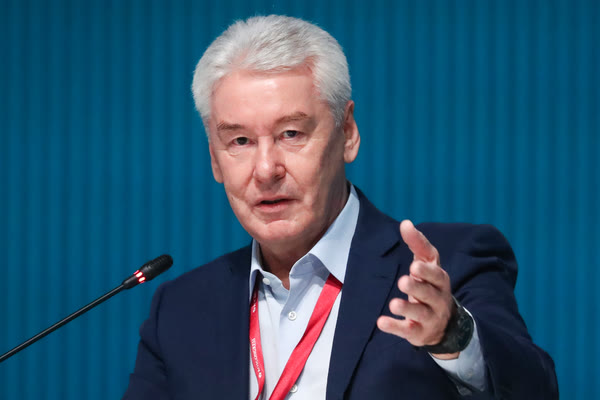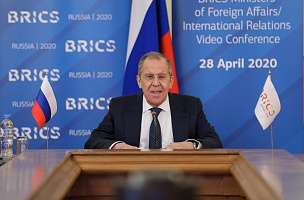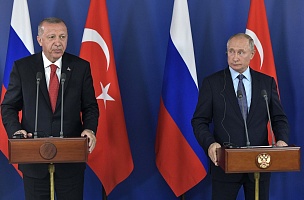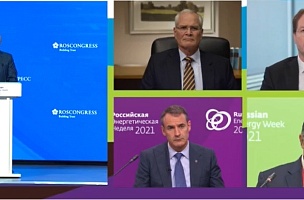KEY CONCLUSIONS
Quality of life has become a key factor in both human and economic development in the modern society
«The results of the survey of the regional network: the majority of people named the possibility of self-fulfillment as the most important factor defining the quality of life. In second place people named the availability and quality of medical care, in third place — the provision of material goods, then safety, and in fifth place they mentioned the quality of the urban environment and public spaces, opportunities for education and various opportunities,» Svetlana Chupsheva, General Director, Agency for Strategic Initiatives to Promote New Projects
«Quality of life in a modern economy is a basic thing. If there is no quality of life, people will leave to look for other cities, other countries. All modern businesses, all global companies that are successful, they are all based on human capital. In order for a country to be successful and achieve economic growth and all other indicators, they must ensure the quality of life. How the country moves forward is different from case to case,» Maxim Oreshkin, Aide to the President of the Russian Federation.
«Previously [quality of life — Ed.] was an add-on to powerful industrialization, not a value in itself. <...> Today’s economy is post-industrial, and human capital comes first. Cities that have achieved a high quality of environment and life for citizens are in the lead, the true leaders of economic growth. This is a completely different relationship between growth and the quality of life, between human capital and capital in the general sense. <...> The development of the quality of life is more important than the development of industrial zones <...> Now public space is one of the most essential, demanded areas,» Sergei Sobyanin, Mayor of Moscow.
PROBLEMS
Vector of urban development needs to shift from industrial zones and transport towards a comfortable urban environment
«Our streets were not made for this huge number of cars, they were just simple traffic corridors. Can we call them public places or spaces? There was no such term. <...> When millions of new cars appear on the roads every 5 to 10 years, the city becomes less and less comfortable, harsh, environmentally unpleasant,» Sergei Sobyanin, Mayor of Moscow.
«There used to be a model for many of our cities that were created during the industrial era: first came a large enterprise, and everything else came second <...>, everything else, including residential neighborhoods, were created as an appendage to this large enterprise. <...> Transformation that the whole country is facing right now is an opportunity to change something in every settlement, so that it improves the quality of life. It is clear that somewhere it will require some degree of support from the federal centre, but in any case, this is the task of the teams working in each locality,» Maxim Oreshkin, Aide to the President of the Russian Federation.
The problem of job creation and city development strategies
«There is an opinion that cities are not growing anymore. But agglomerations are growing, turning into megalopolises with tens of millions of people living in them. <...> New challenges arise, new problems arise, and it is necessary to constantly remain on track, to think about tomorrow. One of the main problems is the structure of the economy, the structure of jobs. What should we develop in Moscow? <...> How do you make sense of the economy of a new period, a new time? And it is important not to make a mistake in the development strategy which you lay down today, and it will bear fruit in five, ten, fifteen years,» Sergei Sobyanin, Mayor of Moscow.
«Often times we hear that Moscow has a large revenue base and its experience cannot be replicated. This is not true,» Igor Shuvalov, Chairman, VEB.RF.
SOLUTION
Cities need to compete for people, while city authorities need to build a dialogue with the residents
«Cities began to compete for people, which means that their cities had to be the best in terms of quality of life, and not in one area, but in all of them at once. A person needs to study today, work tomorrow, get sick the day after tomorrow, go for a walk — he or she needs everything at once. It is a city that has to provide everything all at the same time. Only then it is a city of high quality, a city for the people,» Sergei Sobyanin, Mayor of Moscow.
«Today, a qualified request comes from the Muscovites: somewhere we are ready for a dialogue, somewhere we can tolerate something, somewhere we do not like something. The city that we have now makes us all tolerate something, and forces us to become more flexible in the dialogue, because after certain inconveniences are resolved the quality is created. It is this quality that allows us to develop. <...> You can look at monocities. <...> If a team is hungry for new knowledge, if they act professionally and interact with people — even if it is a town of 50 thousand residents — literally in a year or two people see huge changes,» Igor Shuvalov, Chairman, VEB.RF.
«Quality of life as a driver of economic growth is probably the defining trend in the global economy. We understand that the focus is on the people, their needs, hence the global economy is changing. There is a demand for a green economy, for a circular economy. It is a global trend that will determine the structure of the global economy for many years to come,» Nikolai Podguzov, Chairman of the Management Board, Eurasian Development Bank.
For more information, visit the ROSCONGRESS.ORG Information and Analytical System.






